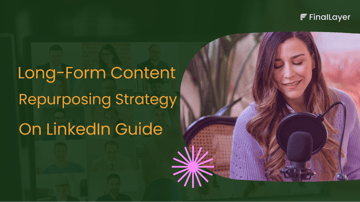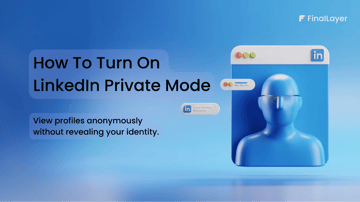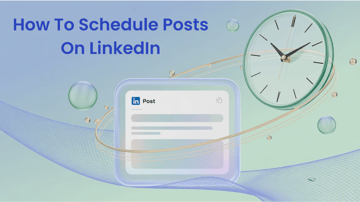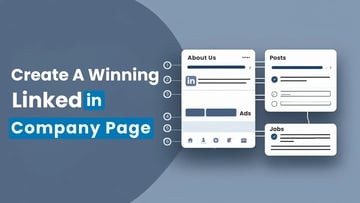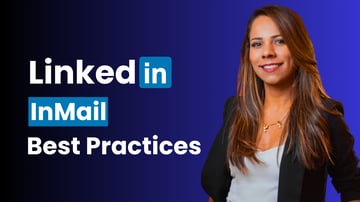Welcome to the third installment of our "LinkedIn Content Mastery" series! In previous guides, we explored effective post formats and engagement strategies. Today, we're diving deep into LinkedIn articles – a powerful but often overlooked content format that can significantly boost your professional presence. Whether you're new to LinkedIn or looking to refine your content strategy, this guide will help you leverage articles to their full potential.
Why LinkedIn Articles?
Let me share something personal: when I first started on LinkedIn, I focused solely on short posts. It wasn't until I published my first article about industry trends that I noticed a surge in profile visits and connection requests. That's when I realized the untapped power of LinkedIn articles.
LinkedIn articles offer unique advantages that standard posts simply can't match. While the feed moves quickly and short posts disappear, articles remain discoverable on your profile indefinitely, creating lasting value for both you and your audience.
When to use LinkedIn Articles
LinkedIn articles provide the perfect platform when your expertise demands more space than a standard post allows. They're especially valuable when you notice recurring questions from your network that deserve comprehensive answers rather than quick replies.
If you've conducted original research, gathered insightful case studies, or compiled valuable data that warrants thorough analysis, articles offer the ideal format to showcase this depth of knowledge.
Moreover, unlike posts that quickly disappear in the feed, articles remain discoverable on your profile for months or even years, creating lasting value and attracting viewers long after publication. This evergreen quality makes articles an essential tool for professionals looking to build a searchable library of thought leadership content that establishes their authority in their field.
How to navigate LinkedIn's Article publishing feature
1. From your LinkedIn homepage, look for the "Write article" option at the top of your feed.
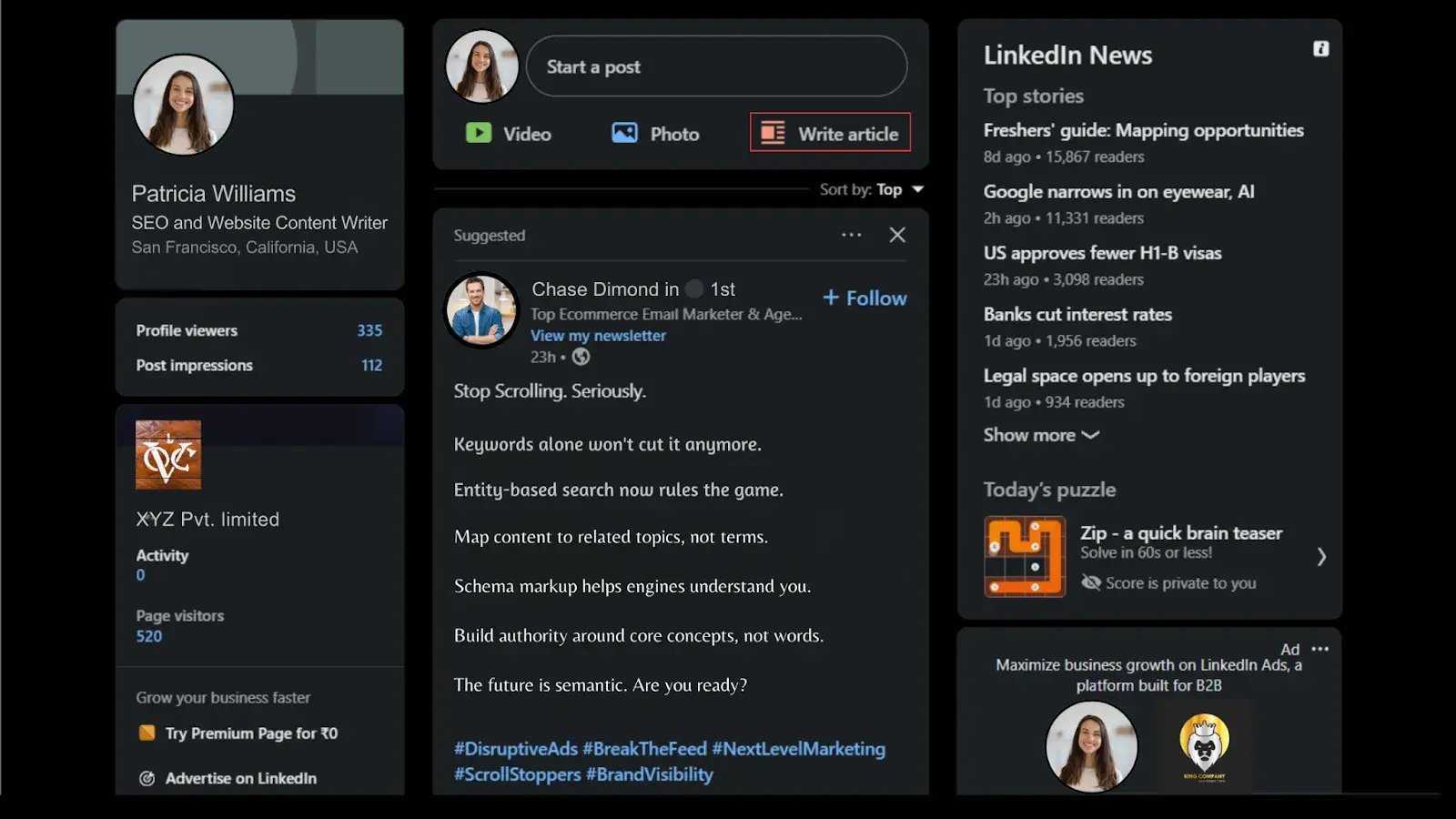
2. Once you click "Write article," LinkedIn will open its publishing platform, where you can: Add your headline at the top (remember to keep it under 60 characters). Upload a cover image by clicking the "Add a cover image" button. Begin writing your content in the body section.
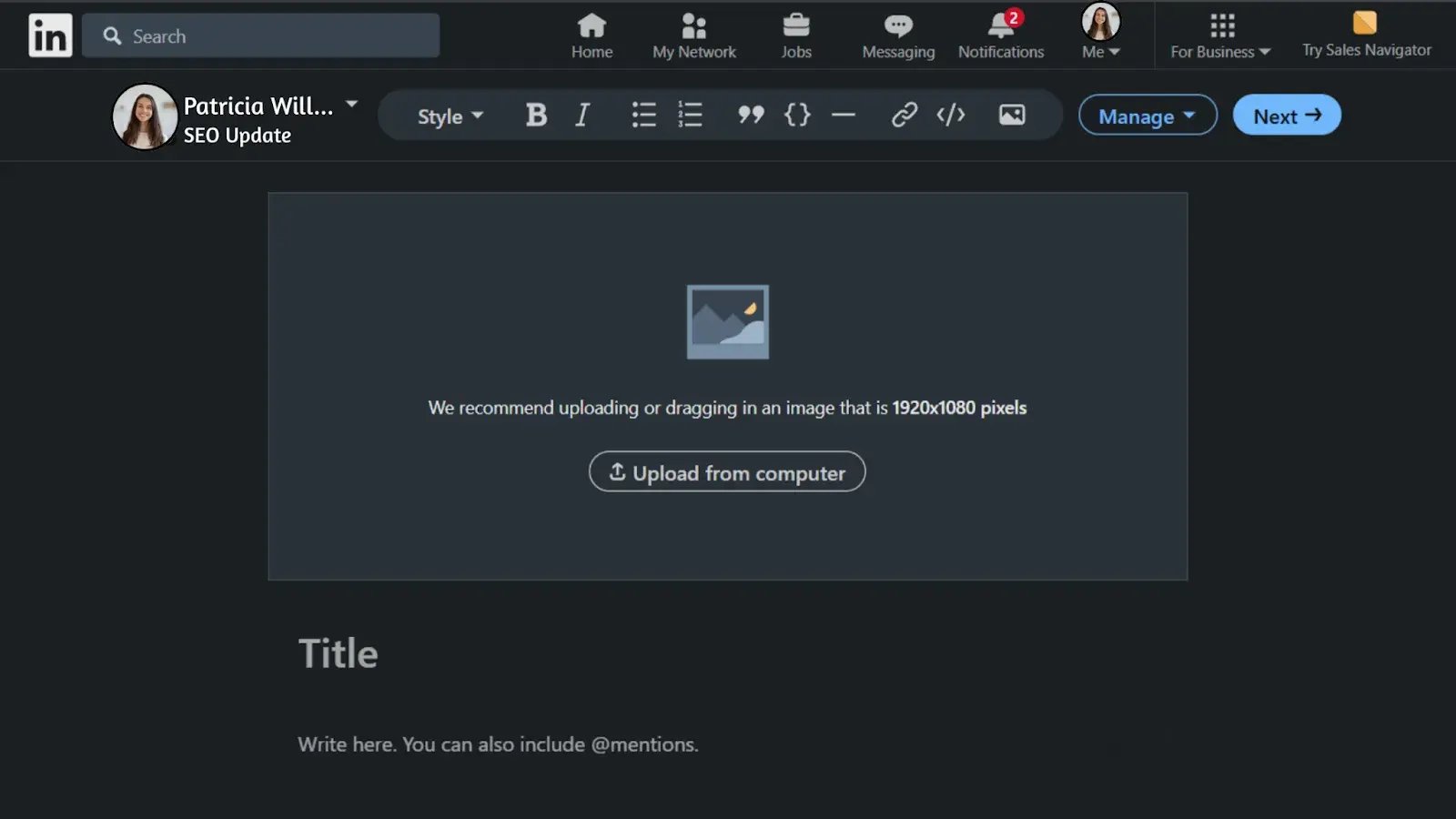
5. When ready, click “Next” and "Publish" to share your article with your network. After publication, you'll have the option to share your article immediately with your feed or schedule it for later distribution.
7. You can also edit published articles if you need to make corrections or updates later.
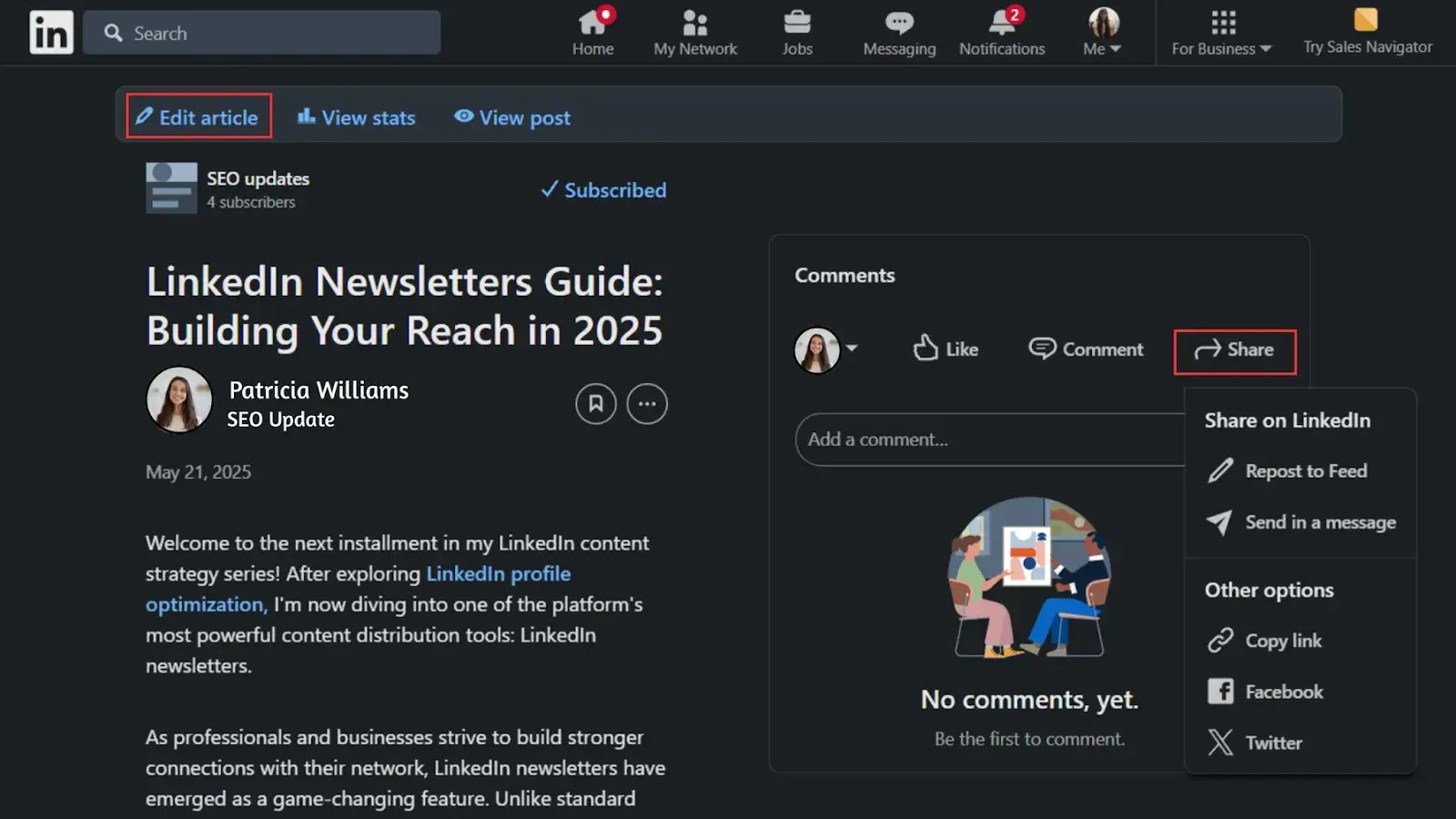
How to create compelling LinkedIn Articles
Step 1: Select the right topic (Search intent focus)
When selecting a topic for your LinkedIn article, focus on search intent by researching what your audience actively seeks information about. Look for industry challenges they're struggling to solve, specific professional skills they want to develop through how-to guides, trend analyses that help them anticipate market shifts, or career development strategies tailored to your network's needs.
The key is specificity – rather than covering broad topics like "marketing strategies," narrow your focus to something more targeted, such as "LinkedIn Marketing Strategies for Small Business Owners in 2025."
This precision not only matches what your audience is searching for but also positions your content to stand out in a sea of general advice, making it more likely to attract readers genuinely interested in your expertise.
Step 2: Craft an attention-grabbing Headline
Crafting a compelling headline is the gateway to getting your LinkedIn article read. Include specific numbers when applicable to add credibility, incorporate powerful words like "Essential" or "Proven" to create urgency, and highlight a clear benefit that addresses your readers' needs.
For optimal visibility, keep your headline under 60 characters and position your primary keyword near the beginning to improve discoverability. Your headline is a promise of value—make it impossible to scroll past.
Step 3: Structure your Article for readability
LinkedIn readers skim before committing to read:
- Begin with a compelling introduction that states the problem and promises a solution
- Use headers (H2, H3) to organize content logically
- Keep paragraphs short (2-3 sentences maximum)
- Include bulleted lists to break up text
- Bold key points you want readers to remember
- Add relevant subheadings every 200-300 words
Step 4: Enhance with visuals
Articles with visuals perform dramatically better:
- Include a high-quality featured image (1200 x 644 pixels)
- Add relevant images every 300-400 words
- Use charts or infographics to present data
- Consider custom graphics with quotes or key takeaways
- Always use images you have the right to use (avoid copyright issues)
Step 5: Adding your personal touch to stand out
To make your LinkedIn articles truly memorable, infuse them with your authentic voice and experiences. Share relevant personal stories and specific examples from your professional journey that illuminate your points while writing in first person to forge a genuine connection with readers.
Spark engagement by incorporating thoughtful questions that prompt reflection, and don't shy away from discussing challenges you've overcome—this vulnerability builds trust and relatability.
Finally, distinguish yourself by offering your unique perspective on industry trends, showing readers not just what's happening but how you specifically interpret these developments. This personal touch changes standard content into compelling narratives that readers will remember long after they finish reading.
For example, instead of writing "Companies should use LinkedIn articles," write "When I started publishing monthly LinkedIn articles at my marketing agency, we saw a 34% increase in inbound inquiries within just three months."
Optimizing Articles for
LinkedIn's algorithm favors articles that create genuine engagement, so aim for content that keeps readers invested for at least 7 minutes.
Spark conversation by embedding 2-3 thoughtful questions throughout your piece, encouraging meaningful comments rather than passive consumption.
Strategic tagging of relevant connections can attract shares from industry influencers, significantly expanding your reach.
Incorporate 3-5 carefully chosen hashtags to improve discoverability without appearing spammy, and strengthen your content network by linking to your previous LinkedIn articles or posts.
These intentional practices signal quality to LinkedIn's algorithm, boosting your article's visibility in feeds.
Keyword optimization without sacrificing quality
Include these important LinkedIn article keywords naturally:
- LinkedIn thought leadership
- Professional insights
- Industry expertise
- Career development
- LinkedIn publishing
- Professional content
- Business networking
- Knowledge sharing
- Professional growth
- Industry trends
Promoting your LinkedIn Article after publishing
Share your insights about the topic by creating a LinkedIn post
What are the best strategies for LinkedIn article promotion?
You will have a chance to edit later
Publishing your LinkedIn article is just the beginning of your content journey. Immediately create an engaging teaser post that showcases your article's most valuable insights to draw readers in.
Follow up by sending personalized messages to specific connections who would benefit most from your expertise. Extend your article's lifespan by repurposing key points into multiple shorter posts over several weeks, creating a content ecosystem around your original piece.
Share thoughtfully in relevant LinkedIn groups (always respecting group rules), and prioritize responding promptly to every comment to signal to LinkedIn's algorithm that your content sparks meaningful conversations. This strategic promotion amplifies your article's reach far beyond its initial publication.
Measuring Article performance
To refine your LinkedIn article strategy, focus on key performance metrics that reveal true engagement. Monitor your total views to gauge reach, but pay closer attention to read ratio—the percentage of viewers who progress beyond your introduction—as this indicates content quality.
Track social actions (comments, reactions, shares) to measure resonance with readers, and note any increases in profile visits or connection requests that follow publication.
If you've included website links, measure external traffic to evaluate how effectively your articles drive audience movement through your professional funnel. Together, these metrics provide a comprehensive picture of your content's impact and highlight specific areas for improvement.
Common pitfalls to avoid
Avoid common LinkedIn article pitfalls by learning from my experience. Never skip proofreading—I once embarrassed myself with multiple typos in an introduction that thousands read.
Commit to consistency rather than publishing sporadically, and always prioritize reader value over self-promotion. Keep your language simple and accessible instead of hiding behind jargon.
Close every article with a clear call-to-action that guides readers on their next step. These simple adjustments will dramatically improve your article's performance and professional impression.
Turning Articles Into business opportunities
LinkedIn articles should ultimately generate tangible professional opportunities, not just views. Close each piece with a relevant call-to-action that offers value, whether it's a downloadable resource, an invitation to share experiences, or a connection request.
When appropriate, weave mentions of your services into the narrative without being pushy. Consider developing a themed series that progressively showcases your expertise while building anticipation.
Don't stop at publication—engage with commenters through direct messages to turn digital interactions into meaningful relationships. Finally, maximize your content's impact by repurposing successful articles across your website and newsletter, extending their reach beyond LinkedIn's platform.
Wrapping Up
LinkedIn articles remain one of the platform's most underutilized features. While most users focus exclusively on short-form content, those who master the art of article writing gain a significant competitive advantage in establishing credibility and building meaningful professional relationships.
One thoughtful, well-researched article per month will yield better results than several rushed, superficial pieces. The perfect subject combines your unique expertise with information your connections are actively seeking. Take that first step today, and watch how it increases your LinkedIn presence.

